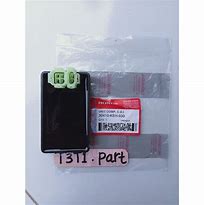Inventory Turnover Ratio Adalah

What does an inventory turnover of less than 1 mean?
An inventory turnover of less than 1 means it takes more than one year to sell all the inventory in a given period. This could indicate that the business is not performing well and that there is obsolete inventory. It may also mean that the business has mismanaged its inventory or that its pricing is too high.
Biaya Pemesanan yang Tinggi
Proses pemesanan dan pengiriman barang memiliki biaya tertentu. Jika perputaran persediaan terlalu tinggi, frekuensi pemesanan juga akan meningkat, yang dapat mengakibatkan biaya tambahan terkait dengan pengelolaan pesanan dan pengiriman yang lebih sering.
How is inventory turnover ratio calculated?
To calculate the inventory turnover ratio, divide your business’s cost of goods sold by its average inventory.
As an example, let’s say that a business reported the cost of goods sold on its income statement as $1.5 million. It began the year with $250,000 in inventory and ended the year with $750,000 in inventory.
Average inventory = ($250,000 + $750,000) / 2 = $500,000
Cost of goods sold = $1.5 million
Inventory turnover ratio = $1.5 million / $500,000
Inventory turnover ratio = 3
This means the business sold out its entire inventory three times over throughout the fiscal year. Put another way, it takes an average of about 122 days (365 / 3) to sell out its inventory.
Daya Tarik bagi Investor
Investor cenderung melihat ITR sebagai indikator potensial kesuksesan bisnis. Rasio yang tinggi dapat menciptakan daya tarik bagi investor karena menunjukkan manajemen yang efisien.
What does inventory turnover ratio tell you?
Inventory turnover ratios can hint at whether there’s room for your sales and inventory management processes to improve. Here are several ways to address a low inventory turnover ratio:
Over-ordering or producing larger batches of a product than you can sell is a common culprit of a low inventory turnover ratio. While you never want to order so little product that your shelves are bare, it's typically in your best interest to order conservatively, especially for a new product that you've never offered before.
Identify which products are likely to be “impulse buys” for your customers and move them to high-traffic areas of your store. You can apply this same principle when you build your e-commerce website by featuring a particular product on your homepage or making a particular product image larger and more prominent within a section. As you test out different placements, pay attention to your inventory turnover ratio before and after each change to help you determine what’s working and what isn’t.
Advertising and marketing efforts are another great way to boost your inventory turnover ratio. Consider promoting products that have been sitting around for a while to consumers outside your established customer base. You could also use email marketing and social media marketing to highlight specific products to existing and prospective customers.
Implementasi Just-In-Time (JIT)
Pertimbangkan menerapkan sistem Just-In-Time untuk meminimalkan stok yang dipegang dan memastikan bahwa persediaan tiba tepat waktu untuk memenuhi permintaan pelanggan.
Tingkatkan Efisiensi Operasional
Perbaiki efisiensi operasional untuk mengurangi waktu pemrosesan dan pengiriman. Pastikan kolaborasi yang baik antara departemen yang terlibat, termasuk gudang, logistik, dan penjualan.
Menghindari Persediaan yang Berlebihan
Rasio inventory turnover membantu perusahaan menghindari penumpukan persediaan yang berlebihan dan dampak buruk lainnya, seperti kerusakan atau penurunan kualitas produk.
Persediaan yang berlebihan dapat menahan modal perusahaan dan menyebabkan biaya penyimpanan tinggi.
Dengan mengoptimalkan persediaan, perusahaan dapat menghindari biaya yang tidak perlu dan meningkatkan aliran kas.
Perbaiki Perencanaan Persediaan
Penting untuk memiliki perencanaan persediaan yang akurat. Gunakan data historis dan tren pasar untuk memperkirakan permintaan dengan lebih tepat. Perhatikan musim, tren, dan faktor-faktor lain yang dapat memengaruhi penjualan.
What is inventory turnover ratio?
Inventory turnover ratio (ITR), also known as stock turnover ratio, is the number of times inventory is sold and replaced during a given accounting period. It’s calculated by dividing the cost of goods sold (COGS) by average inventory. ITR shows the number of days it takes to sell inventory on hand.


